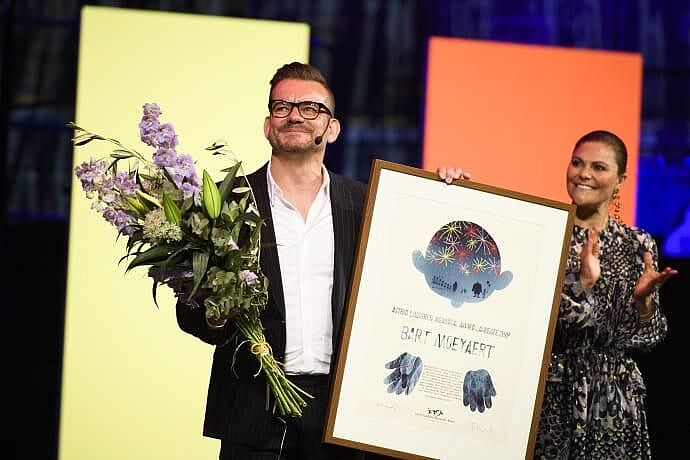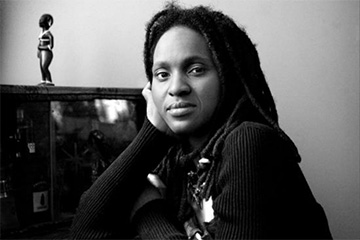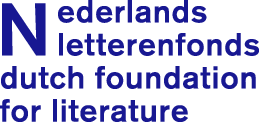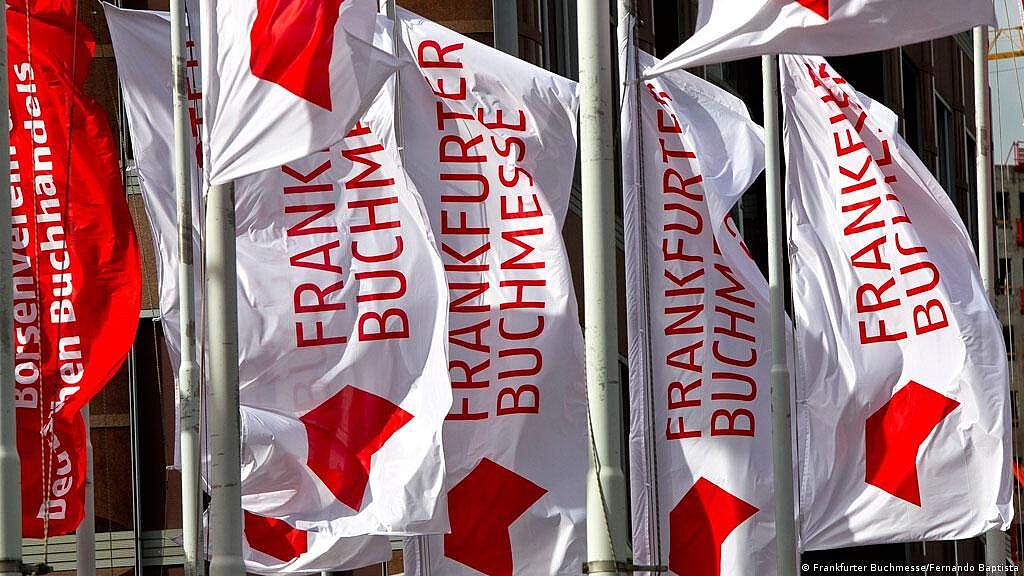Dutch Literature in the English
An overview
As the Danish critic and author Georg Brandes famously remarked in his 1899 essay Weltliteratur, translation is “a lamentable necessity” for internationally oriented authors working out of smaller literatures, Dutch included. However, whereas some non-Anglophone literary traditions have managed to percolate the market and even thrive in English translation — think of the Latin American boom and the success of Nordic noir — Dutch literature in all its guises has so far remained on the margins of the Anglophone literary scene.

Bart Moeyaert accepts the 2019 Astrid Lindgren Prize, often referred to as the ‘Nobel Prize of Children’s Literature’.
But that is not for lack of trying, and recent accolades suggest Dutch literature in English is having something of a moment. To name only three highlights: Marieke Lucas Rijneveld won the 2020 International Booker Prize together with their translator Michele Hutchison for the debut novel The Discomfort of Evening; Bart Moeyaert landed the prestigious Astrid Lindgren Prize, often called the Nobel Prize for Children’s Literature, in 2019 (Astrid Lindgren Memorial Award); The New York Times named Stefan Hertmans’ War and Turpentine one of its 10 Best Books of 2016. While most Anglophone publishers, critics and everyday readers may not (yet?!) have an intuitive idea of what Dutch literature is all about, these breakthroughs indicate cracks in the dyke separating Dutch literature from Anglo-America.
In this post, we take a bird’s-eye view, exploring three aspects that characterise Dutch-English literary transfer today: the Anglophone market’s resistance to translations — and ways to overcome it; the central importance of government support for translation (especially into English); and the amplifying power of international industry events where the major players in English-language publishing mix with their non-Anglophone colleagues, the most important being the book fairs in London and Frankfurt.
Breaching a resistant translation market
By and large, publishers, critics and readers in Anglophone countries have a superficial interest in Dutch literature at best. ‘Dutch literature’ tends to be transmogrified into ‘European’ or even simply ‘foreign’ literature, emphasising a perceived difference in taste between Anglo-Saxon, ‘empirical’ literary norms and European ‘philosophical and reflexive’ ones. This rhetorical dislocation serves to reiterate the dominance of English and the impermeability of its literary borders, a view epitomised by a critic writing in The Observer in 1999: “The awkward fact is that, though we buy ever-increasing quantities, we have a small appetite for new [books] by writers with funny names. Our own literature provides, we believe, all the satisfaction we need.”
In the twenty-first century, the English-language book market has only become more resistant to translations. The Three Precent project at the University of Rochester estimates that only three percent of all books published in the US are translations — in terms of literary fiction and poetry, that number is actually less than one percent. The situation is only slightly better in the UK. And only a very small fraction of all translations to English are from Dutch. Why is it that the most desirable target language for international writers is also the most difficult to access? Answer: it’s complicated.
Processes of globalisation, conglomeration and digitisation have transformed translation publishing, pushing out many legacy publishers and making space for new entrants and modes for bringing translated literature to English readers. Those old-guard publishers that have survived are now consolidated as imprints within large publishing conglomerates, where economic concerns trump others and stymie many translation projects before they begin. This is due in part to the added risk involved in publishing a translation: competent translators are expensive and books by unknown authors from unfamiliar literary traditions are harder to sell. Despite facing the same challenges, a handful of independent publishers and university presses continue to brave these risks, less out of fealty to the bottom line and more out of a dedication to provide access to international voices and create transnational bridges between readers, writers, and translators. That said, all publishers have had to adapt to survive in today’s literary marketplace.

Today’s largest publisher of translated literature in English is Amazon Crossing, now known as Amazon Publishing. Founded in 2009 and owned by Amazon, it harnesses Amazon.com’s data on worldwide readers’ purchasing history to single out books it predicts will do well with readers in new language markets. As of 2022, 12 English translations of books by Dutch authors have been published by Amazon Crossing/Amazon Publishing, including Connie Palmen’s Your Story, My Story (2021, translated by Eileen J. Stevens and Anna Asbury, orig. Jij zegt het, 2015) and Griet Op de Beek’s Mona in Three Acts (2019, translated by Michele Hutchison, orig. Kom her dat ik u kus, 2014), among others.
Several publishers headquartered in the Low Countries, including the Hasselt-based children’s book publisher Clavis, the Rotterdam-based publisher Lemniscaat, and the Amsterdam-based literary publisher De Geus (via it’s English-language imprint World Editions) produce in-house English translations of Dutch-language works in their list and distribute them via distribution partners to English-language readers — another clever way to breach the Anglophone market.


Another strategy available to Dutch and Flemish authors is to write directly in English. One such writer to have tried his hand at the language of Shakespeare was the enfant terrible of post-war Dutch literature, Gerard Reve. Reve moved to London in 1951 and wrote in English for several years, publishing The Acrobat and Other Stories in 1956. But he eventually returned to Amsterdam and the language of Vondel after his star failed to rise in London.
A number of Low Countries authors also self-translate as a means to reach English readers. Contemporary examples include Paul Verhaeghen, who self-translates from Dutch to English, and Chika Unigwe, who self-translates from English to Dutch but whose works appear first in Dutch translation. Verhaeghen translated his 614-page magnum opus Omega Minor (2004) into English in 2007 and won the Independent Fiction Prize for his efforts a year later. Unigwe, a Nigerian-Flemish author now living in Atlanta, writes in English and self-translates into Dutch. Like Verhaeghen, she has also had success in both languages. She debuted in 2005 with De feniks, which was published first in Dutch, then in English as The Phoenix (2007). She used the same method for her next two novels, Fata Morgana (2007), published in English as On Black Sisters’ Street (2009), and Nachtdanser (2011), published in English as Night Dancer (Jonathan Cape 2011).
Government support
The Dutch and Flemish governments have developed ways to more effectively facilitate Dutch-English literary transfer. Translation grants have become an increasingly common policy tool for stimulating outgoing literary transfer from Dutch. Today, approximately one of every two literary translations from Dutch are government-supported. A foreign publisher who has acquired translation rights for a title by a Flemish or Dutch author can apply for a translation grant from Flanders Literature or the Dutch Foundation for Literature (respectively), which cover around half of the translator’s fee. This support is meant to remove some of the financial risk publishers incur when they ‘take a chance’ on a Dutch-language book. It is fair to say that many translation projects would not have come about without it government support.


The two literature foundations strategically invest proportionately more money in Dutch-English translations than they do for other target languages. This has to do with the fact that once a title has been translated to English, translations into others are much more likely to follow. The foundations also invest in English sample translations for books they would like to see translated. This has a practical aspect: very few international publishers are capable of reading Dutch and rely on the English translation when evaluating whether to acquire the book for their language market, be it Anglophone or otherwise. Alongside this practical aspect is a prestige-related one: translation into English (and to a lesser extent French and German) represents a major step in an emerging author’s consecration on the international scene.
The Dutch and Flemish governments have also invested in the people that create translations. Thanks to the decades-long efforts of the two literature foundations and other organisations like the Dutch Language Union (De Taalunie) and the Centre of Expertise for Literary Translation (ELV), a vibrant literary translation community now exists in the Low Countries. Publishers have their choice among many excellent Dutch-English translators. 37 Dutch-English translators are currently accredited by the DFL and FL, an important milestone in the career of a literary translator working from Dutch, as accreditation, alongside being a professional accolade, is a prerequisite for receiving a translation grant.
The two literature foundations are also important promoters of Dutch literature internationally. They regularly pitch titles to Anglophone and other publishers at international book fairs, invite international publishers to the Low Countries to mingle with local authors and publishers, and maintain a network of professional contacts in the book world. All of these efforts soften the ground and help new translation projects germinate. Without government support, Dutch and Flemish writers’ road to English would be much more perilous and much less professionalised.
Book fairs
A final important engine of Dutch-English literary transfer are international book fairs. These recurring, industry-converging events are crucibles for new translation projects. Here, working relationships are struck and maintained, promising books are discussed, and translation rights are bought and sold. English has an important indirect role to play at book fairs: in very many cases, English is used as the language of business and English sample translations are traded as the currency that drives translation deals. And because book fairs attract publishers from all over the world, translation rights for a book that really turns heads will often get snatched up by many international publishers at once — as was the case for Stefan Hertmans’ Oorlog en terpentijn, which eventually found buyers in 30 languages after catching fire among acquisitions editors at the 2014 Frankfurt Book Fair. (See our post on the reception of David McKay’s 2016 English translation, War and Turpentine, here.) While there are many international book fairs catering to different genres and regions, the London Book Fair and the Frankfurt Book Fair are the largest and most important.

This has not be lost on the Dutch and Flemish governments, who have singled out guest of honour presentations at book fairs as a singularly effective way to reach international publishers. Flanders and the Netherlands’ first joint showing at Frankfurt in 1993 is widely seen as a watershed moment for Dutch literature in the world, giving many international publishers their first glimpse of a rich literature that until then had been shrouded behind the language barrier. Since then, Flanders and the Netherlands have presented as guest of honour (sometimes together and sometimes separately) at various important international book fairs, including the Salon du livre in 2003 (together), the Beijing Book Fair in 2011 (the Netherlands alone) and the Frankfurt Book Fair for a second time (together) in 2016. (See our post on co-branding Dutch literature at the 2016 Frankfurt Book Fair here.) (#Fairs)
We have looked at three defining aspects that shape how books travel from the Low Countries to the Anglophone world: a resistant market, government support, and international book fairs. In sum, there is much to celebrate and much to lament about literary transfer from Dutch to English, but transfer there is!
Additional resources
For those interested in reading up on the latest, see the Eurolit Network’s March 2021 issue of The Riveter, featuring literature from the Netherlands; the New Dutch Books in English blog and newsletter; and the English-language websites of the Dutch Foundation for Literature, Flanders Literature and the-low-countries.com. For an overview of the most-translated authors and works and the most active publishers and translators of Dutch literature in English, see our ‘Facts and figures’ post. For a bibliography of academic research on the production and reception of Dutch literature in English, see here.
(Jack McMartin)
